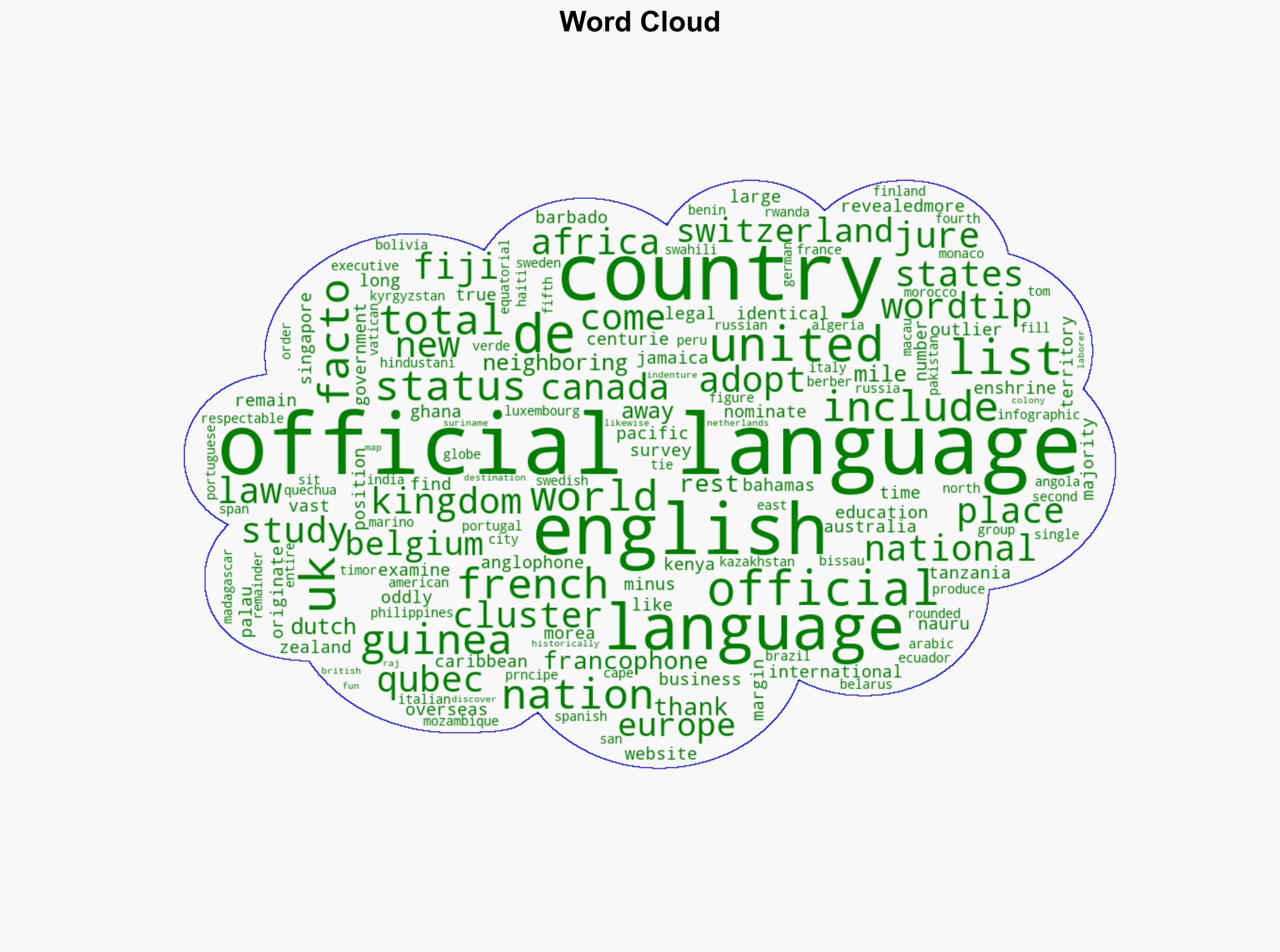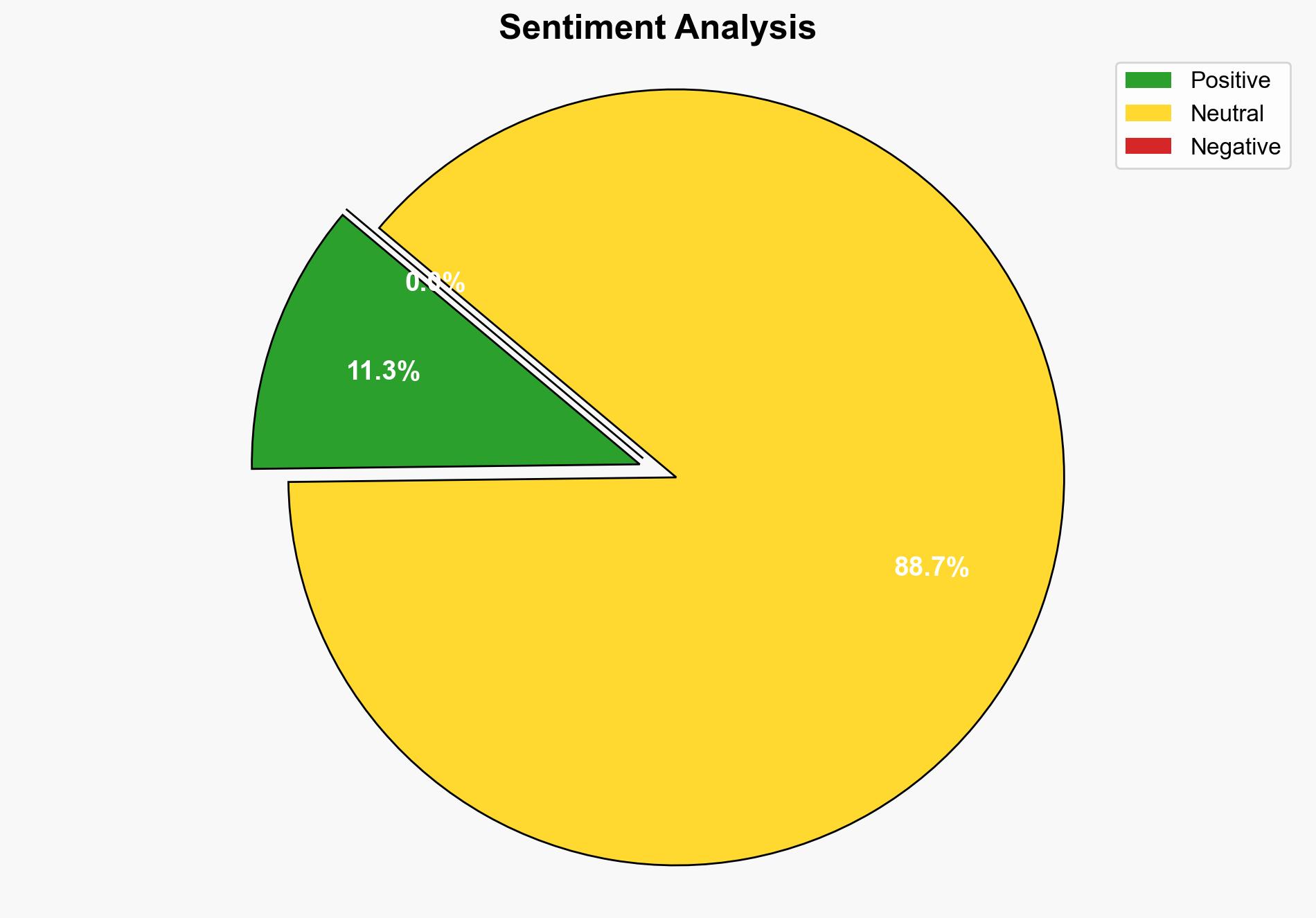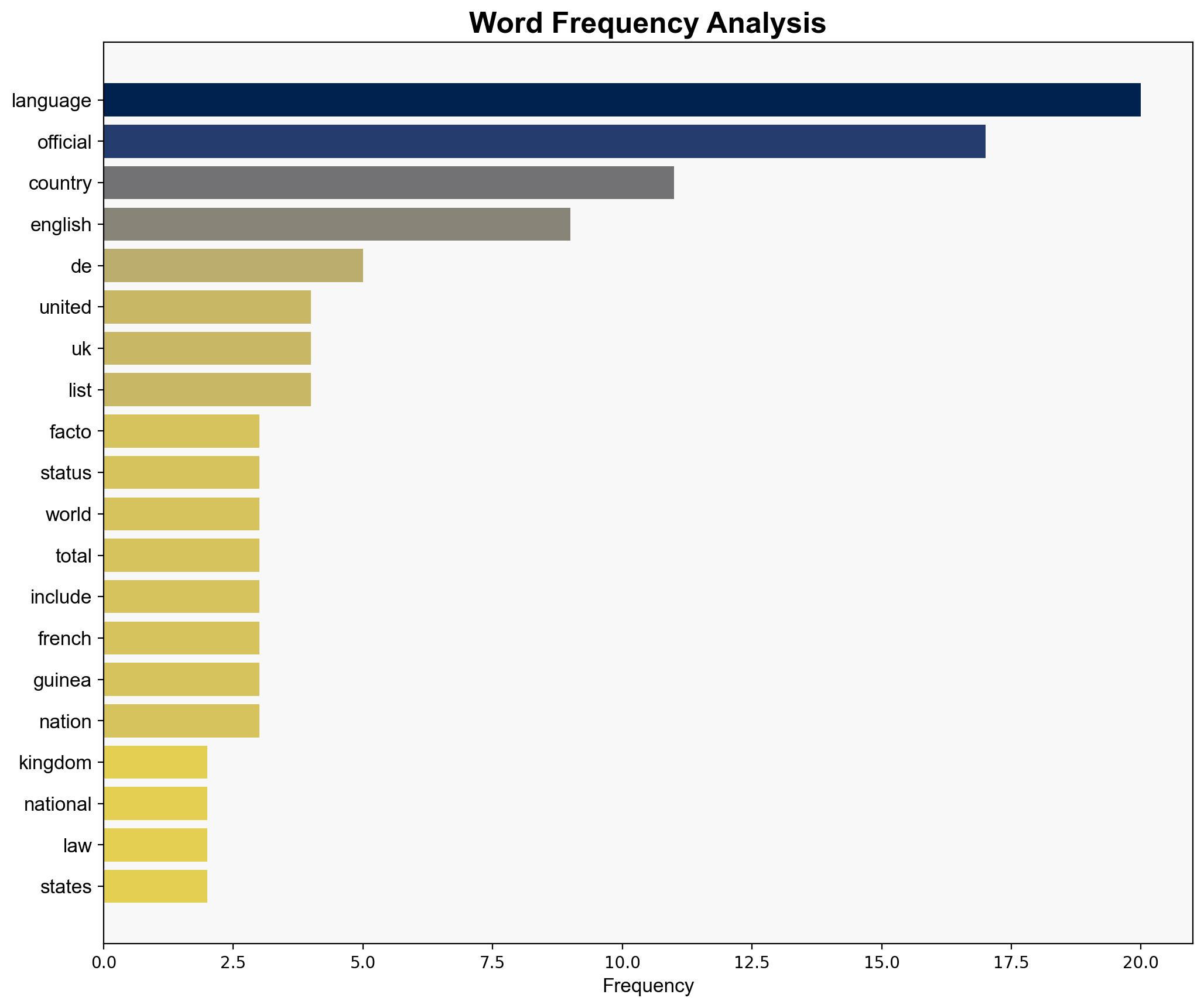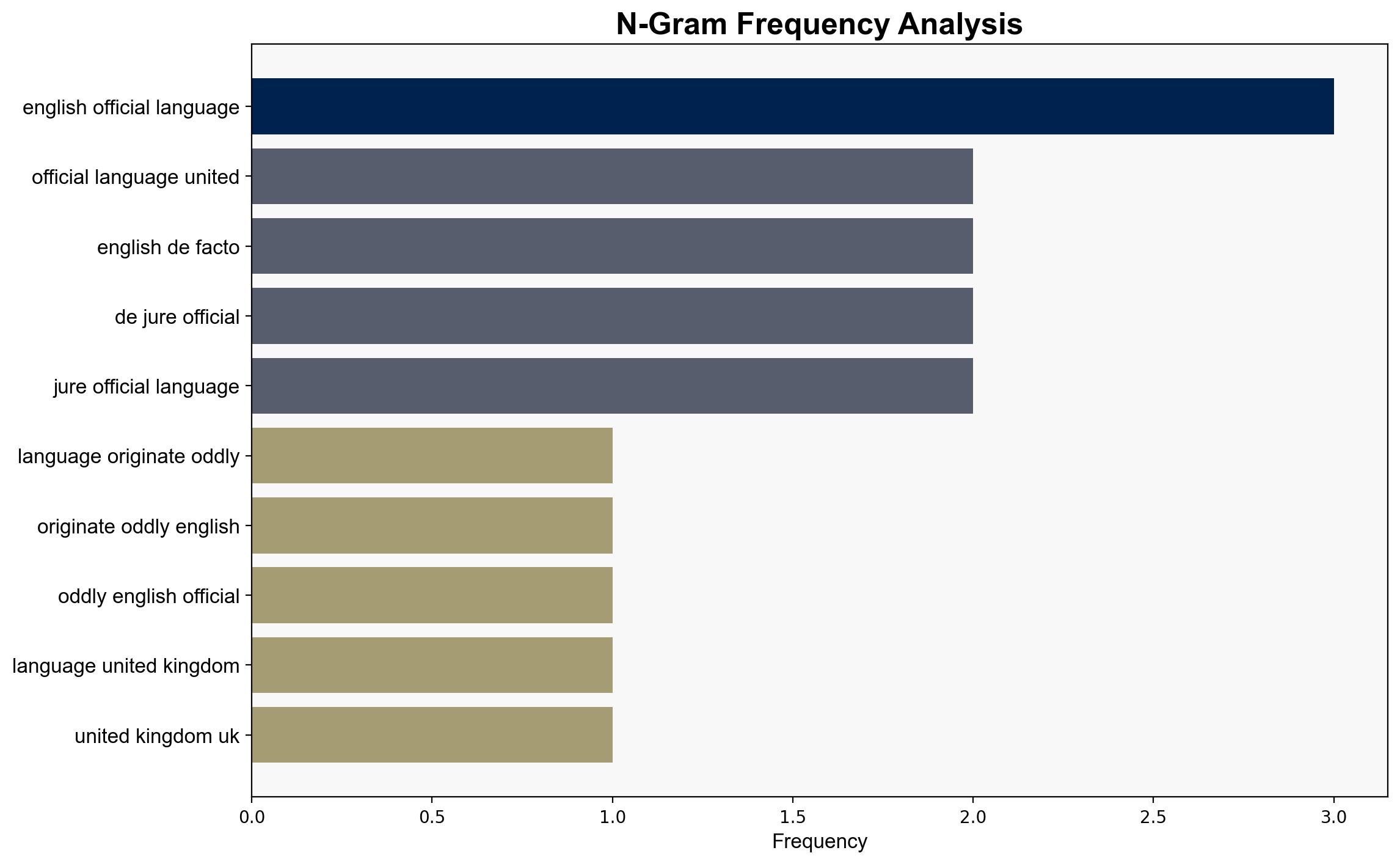The Official Languages Found in the Most Countries of the World Mapped – Mental Floss
Published on: 2025-06-03
Intelligence Report: The Official Languages Found in the Most Countries of the World Mapped – Mental Floss
1. BLUF (Bottom Line Up Front)
The analysis reveals that English is the most widely adopted official language globally, followed by French, Arabic, Spanish, and Portuguese. This linguistic distribution highlights significant geopolitical and cultural influences, with English dominating due to historical ties and global economic integration. Strategic recommendations include leveraging linguistic commonalities to enhance diplomatic relations and international cooperation.
2. Detailed Analysis
The following structured analytic techniques have been applied to ensure methodological consistency:
Causal Layered Analysis (CLA)
English’s prevalence as an official language is rooted in historical colonization and current global economic systems. Systemic structures such as international trade and education reinforce its status. The worldview perceives English as a tool for global communication, while the myth of English as a universal language persists.
Cross-Impact Simulation
The widespread use of English facilitates cross-border communication, reducing linguistic barriers in international diplomacy and trade. However, it may also create dependencies, with non-English speaking regions potentially marginalized in global discourse.
Scenario Generation
In a scenario where English continues to dominate, global communication and collaboration may improve. Conversely, if regional languages gain prominence, there could be a shift towards localized governance and cultural resurgence. A balanced scenario might see multilingualism becoming more valued, fostering inclusivity.
3. Implications and Strategic Risks
The dominance of English poses risks of cultural homogenization and potential marginalization of non-English speaking regions. This could lead to political tensions and economic disparities. The rise of regional languages might challenge English’s dominance, impacting global communication networks and economic partnerships.
4. Recommendations and Outlook
- Encourage multilingual education to enhance cultural understanding and reduce dependency on a single language.
- Foster international partnerships that respect linguistic diversity, promoting equitable participation in global forums.
- Scenario-based projections suggest that a balanced approach to language policy could mitigate risks of cultural dominance and enhance global cooperation.
5. Key Individuals and Entities
No specific individuals are mentioned in the source text. The focus is on linguistic trends and their geopolitical implications.
6. Thematic Tags
linguistic diversity, global communication, geopolitical influence, cultural integration





